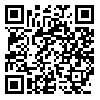BibTeX | RIS | EndNote | Medlars | ProCite | Reference Manager | RefWorks
Send citation to:
URL: http://irj.uswr.ac.ir/article-1-638-en.html
The phenomena of "graying" of population which was started in 20th century will continue in the next. It confronts the world with new challenges in the realms of health economy, politics, and cultural issues which are very difficult to overwhelm. The problems arising of this phenomena must be welcome, because they are indicators of upcoming development. Aging of population has occurred in developed countries since many years ago. Therefore their experience in dealing with the resulted problems will be of great help to the developing countries, but it must be remembered that every country has its unique needs and perspectives of future. Thus, modification of existing models of service delivery to elderlies in order to match with the specific conditions in each country is a necessity and major task for policy makers. Regarding these facts, United Nations in their second General Assembly on the topic of "Aging" rendered the International Strategy for Action on Aging as general guidelines, but stressed that every country must tailor programs to fit to its individual circumstances. In this article, an overview of future demographic changes of the world, challenges of the aging population, and the world programs on aging will be rendered and then a brief glance to what is happening in Islamic Republic of Iran as a country which is going to age in next few decades will be presented.
Received: 2005/06/29 | Accepted: 2005/08/9 | Published: 2005/09/1





